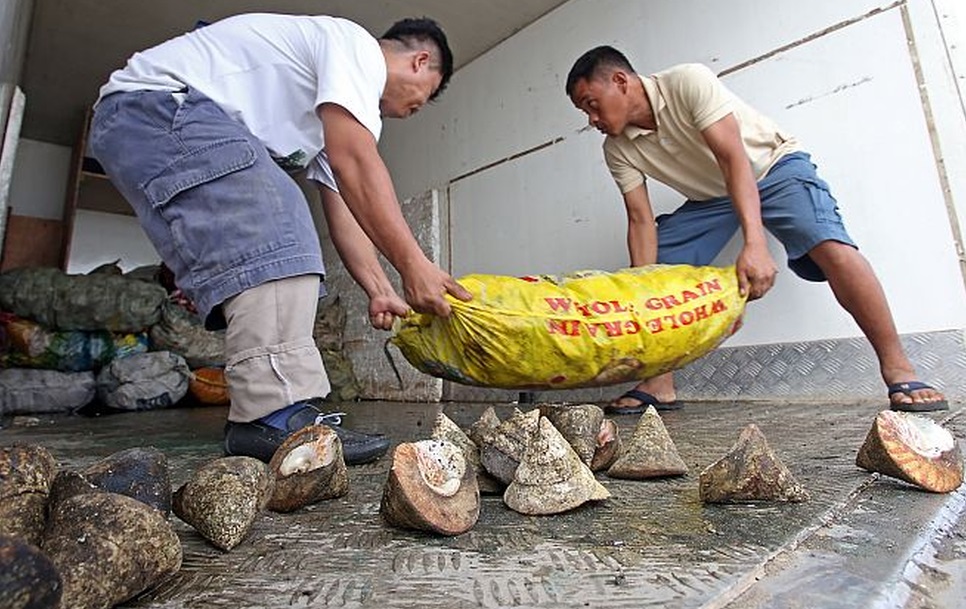‘Intensify marine protection’

BFAR-7 staff conduct an inventory of the seized shells from Palawan. (CDN PHOTO/JUNJIE MENDOZA)
Environment advocates called on government to intensify efforts to ensure marine protection after 137 tons of sea shells were seized in Olango island last week.
The Bureau of Fisheries and Aquatic Resources (BFAR) retrieved 24,468 seashells of the species Trochus niloticus, locally known as samong or topshell, from poachers.
READ: Bancas with sacks of ‘samong’ held off Olango Island | Imprisonment, fines await owner, crew of seized banca
A boatman told BFAR that they collected the shells from Tubbataha Reef, a marine protected area in Palawan.
Cebu is a major transshipment point for raw corals and shells, which are processed and exported.
“While it is good that the shipment was apprehended, government still has to intensify its efforts to ensure that our fisheries and their habitats are adequately protected,” Oceana Philippines Gloria Estenzo-Ramos said.
Elvie Flores of BFAR-7 said they filed a case against Jovelito Beñabel, owner of MB Josevel Joy 4, and ship captain Paulino Beñanel for violating Republic Act 10654 or the Act to Prevent, Deter and Eliminate Illegal Unreported and Unregulated Fishing, an amendment to the Fisheries Code of the Philippines.
The law states it is illegal to gather, take, possess, transport and export rare, threatened or endangered species.
Violators will be penalized five times the value of the species or P500,000 or P5 million pesos whichever is higher.
Topshell is considered a threatened reef gastropod that is sought for the mother of pearl used in making buttons and jewelry.
The apprehended boatmen told BFAR that the buying price for raw topshell is P300 per kilo, equivalent to at least four topshells. It is also sold at US$10 to $33 per piece in eBay, an online buy and sell platform.
A report of the USAID-funded Coastal Resource Management Project in 2003 said Cebu is a strategic market for shell traders.
The report said the shellcraft industry thrives in Cebu because of the rising tourist arrivals.
But Felix Pahaganas of BFAR’s Fisheries Inspection and Quarantine Service said shell processing has declined, with only 80-100 businesses in Cebu engaged in shell processing as of 2015.
Last week’s apprehended shipment appears to be a “significant operation,” according to Marlito Guidote of USAid-Ecofish.
“Naval operatives believe this represents only one-third of the actual shipment,” Guidote said.
BFAR staff buried the intercepted shells in a disposal facility in Carmen town, northern Cebu.
“This is the first time that we heard that it reached Cebu. We really don’t know where those end up. But Cebu has always been the hotspot for shells,” said Angelique Songco, PASu at the Tubbataha Reef Natural Park.
Disclaimer: The comments uploaded on this site do not necessarily represent or reflect the views of management and owner of Cebudailynews. We reserve the right to exclude comments that we deem to be inconsistent with our editorial standards.
